Privateer 161 Gen 2
Wheel Size: 29’’; compatible with 27.5’’ rear wheel
Travel: 161 mm rear / 170 mm front
Geometry Highlights:
- Sizes Offered: P1, P2, P3, P4
- Headtube Angle: 64°
- Reach: 490 mm (size P3)
- Chainstay length: 448 / 458 mm (Size P3, adjustable)
Frame Material: Aluminum
Price:
- Frame w/ Fox Float X2 Performance Elite: $2,479 / £1,979 / €2,179
- Complete Bike: $4,989 / £3,989 / €4,489
Blister’s Measured Weight: 39.84 lb / 18.07 kg (size P3)
Test Locations: Washington, British Columbia
Reviewer: 6’, 165 lbs / 183 cm, 74.9 kg
Test Duration: 5 months
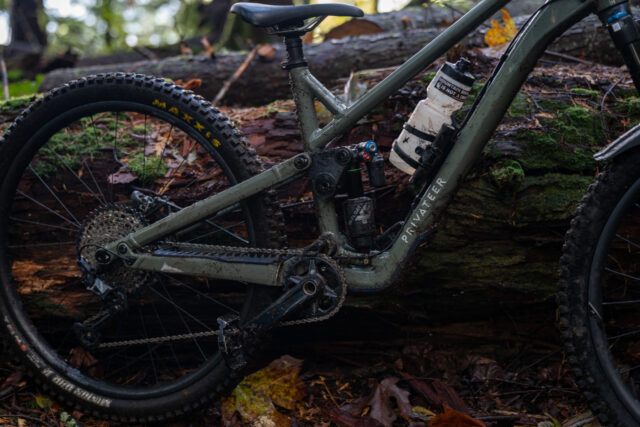
Intro
I was a big fan of the original Privateer 161 when I reviewed it a few years back, and — spoiler alert — I like the new one a whole lot, too. But Privateer hasn’t simply given the bike a light refresh and called it a day. The second generation 161 rides quite a bit differently from the original, and while the end goal of building an affordable, high-performing, reliable Enduro race bike hasn’t changed, many of the details have. So while both bikes are great options for going fast on a budget, it’s far too simple to say that everyone who loved the original (or didn’t click with it) will feel the same way about the new one. Let’s see what Privateer has done to overhaul their flagship bike.
[For more on the design details and specs of the 161 and its little sibling, the 141, check out our First Look on the pair, and Ep.192 of Bikes & Big Ideas with Dan Hicks, the engineer behind the bikes.]
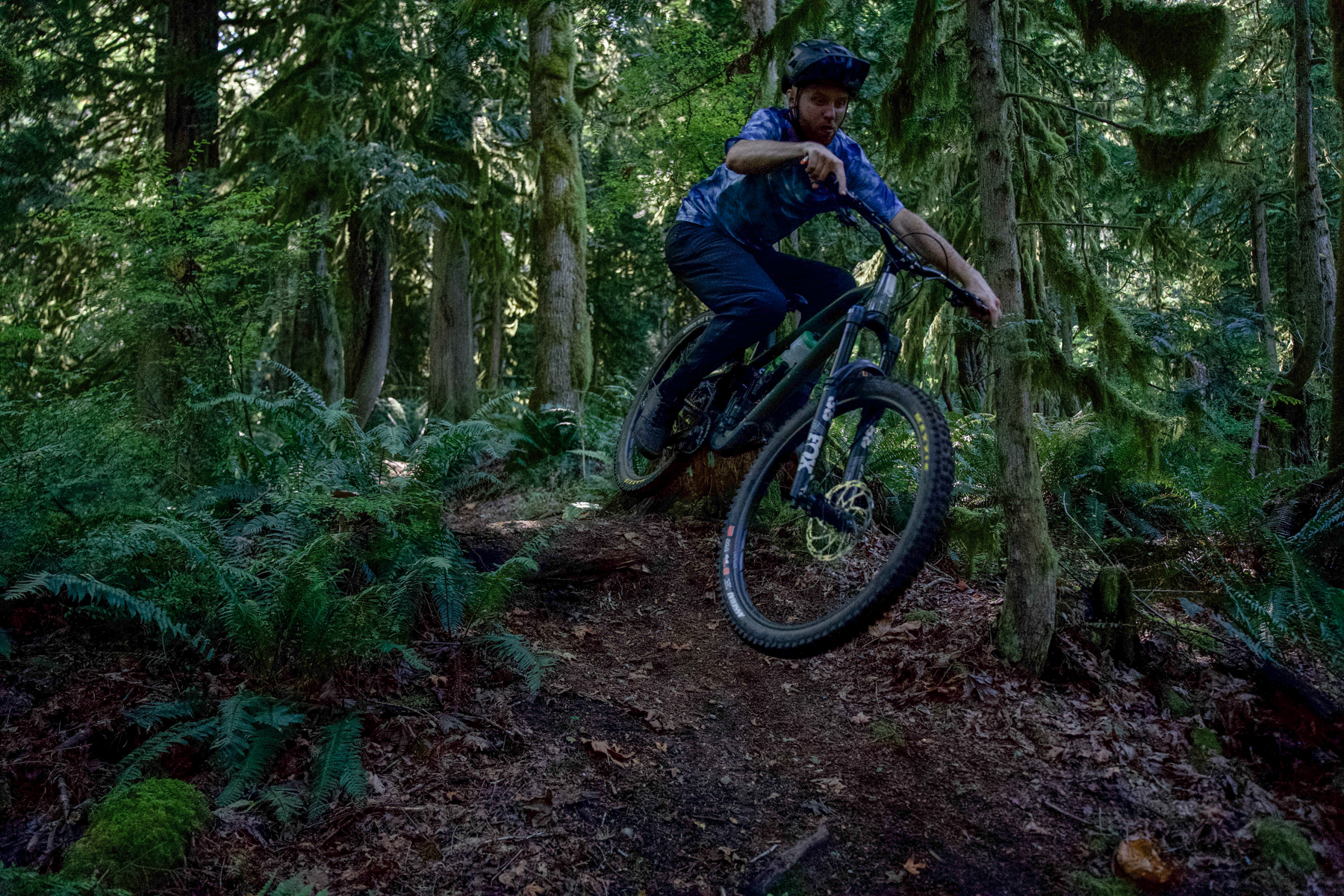
Fit & Sizing
David Golay (6’, 165 lb / 183 cm, 74.9 kg): Privateer’s recommended sizing chart puts me squarely in the middle of the band for the P3 size (more or less a Large in that sizing scheme) and based on the geometry chart, I was quite confident that I’d get along well with the fit and sizing. That proved to be correct — I had a very easy time getting comfortable on the P3 161, and at no point was I tempted to try another size.
For the most part, the fit of the second-generation bike hasn’t changed a ton from the original. The stack height is 10 mm higher on the new bike, and the effective top tube is a few millimeters longer as a result, but that’s about it. The seat tube is still very steep at 80° effective / 77° actual across the whole size range, the reach is still 490 mm for the P3 frame, and apart from the chainstay length flip chip (more on that in a minute), the other geometry numbers haven’t changed a ton, either.
When I reviewed the original 161, I found its seat tube to be a little over-the-top in its steepness, but I haven’t felt that way about the new bike. I think there are a few reasons for that. One of the big ones is that the 161 is no longer such an outlier compared to a lot of other modern Enduro bikes, and I’m simply more accustomed to very steep seat tubes at this point. But I think the taller stack on the new bike, and the fact that it works well when ridden from a relatively centered, neutral position (more on that in a minute, too) also help by more naturally complementing the very steep seat tube and its overall rather upright seated position. I also suspect that the new bike ends up running more dynamic sag in a lot of real-world situations (especially when pedaling) than the original for several suspension-related reasons, and the seat tube is functionally a touch slacker as a result.
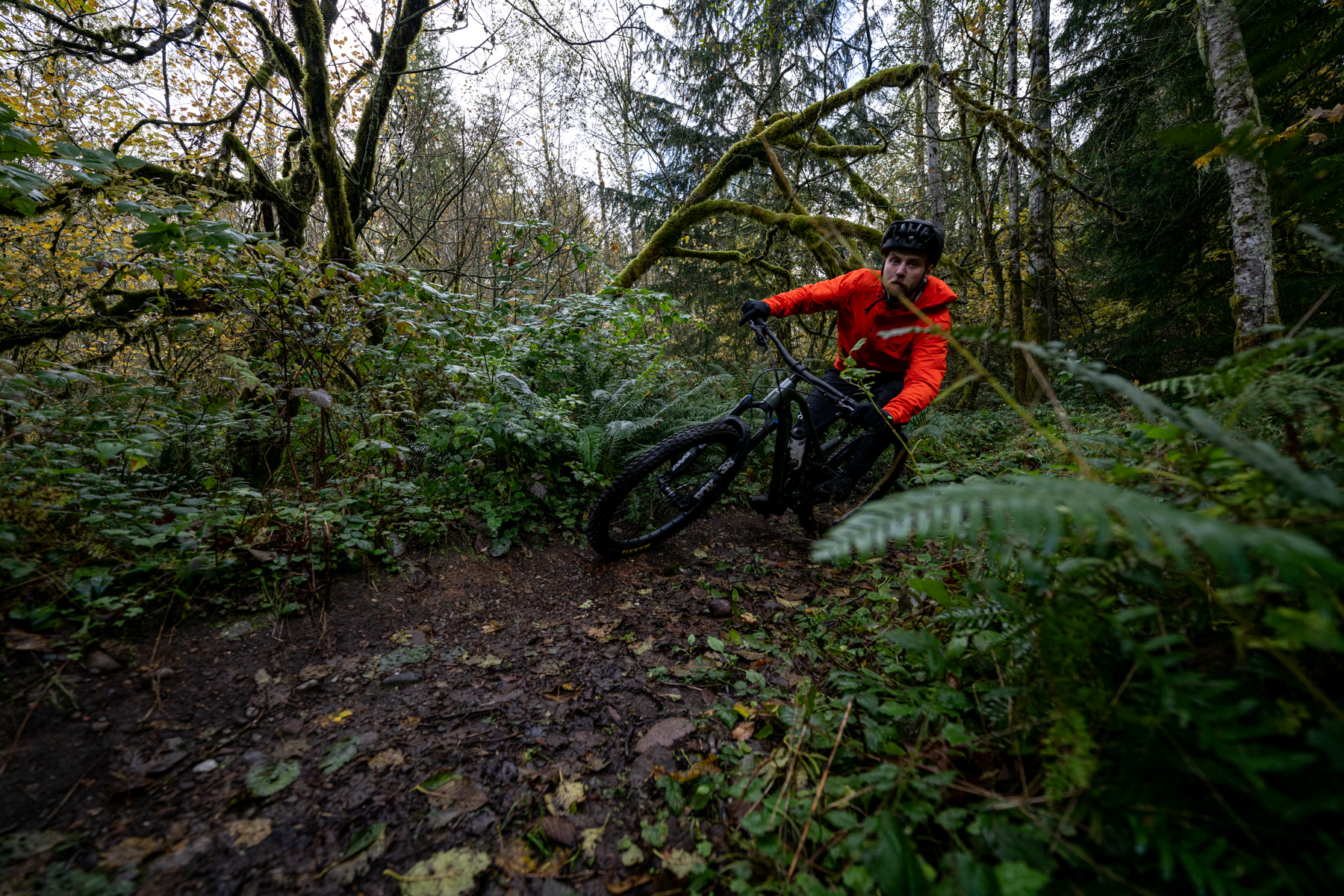
I found myself running the seat farther back on its rails than I do on most other bikes to effectively slacken the seat tube a touch, but that frankly makes the adjustment range feel more usable for my preferences — I typically have the seat fairly far forward on most bikes. Still, the 161 still wouldn’t be my first choice if you want a big Enduro bike that feels especially natural to pedal on a lot of mellow, rolling terrain. But for the more winch-and-plummet style riding that the 161 is really meant for, I got along great with both its steep seat tube and the fit in general.
Climbing
The first indication that the new 161 was going to be pretty different from the old one came as soon as I started my first climb. The original bike stood out for being exceptionally efficient, arguably to a fault — its small bump sensitivity and traction under power left plenty to be desired. The updated bike is still above average for a 160+ mm travel Enduro sled when it comes to efficiency, but it dials things back a bit and gets vastly better traction under power in trade.
Even as someone who spends a ton of time climbing fairly smooth fire roads (especially on this class of bike), I’ve found that to be a trade for the better. The 161 V2 isn’t as eager to really put the hammer down and try to climb quickly as the original, but it’s plenty efficient so long as you’re keeping your pedal stroke moderately smooth, and it’s far more comfortable and easy to manage on rougher climbs.
As per usual for this sort of bike — particularly ones with an especially burly build (appropriately so, in my book) and a weight pushing 40 lb / 18.1 kg — the 161 is more interested in grinding its way to the top at a moderate pace than it is in more spirited efforts, but the 161 is still a willing climber if you’ve got reasonable expectations for what you’re getting. The one other thing that I’ll note is that the heel clearance on the chainstays isn’t great. I tend not to be very prone to heel rub (I guess I just keep my feet pretty straight on the pedals?) and it wasn’t a big deal for me at all, but folks with substantially bigger feet (I’m a US 10 / EU 43) and/or those who are just more heel rub prone should take note.
Descending
Of course, the real point of the 161 is to descend burly trails very, very quickly, and at least for folks with the right preferences, it does so extremely well. I’ve found its handling to be quite intuitive and well-suited to its intended purpose. The 161 is a notch on the more stable end of the spectrum, by the standards of 160+mm-travel Enduro bikes, but it’s by no means a big outlier and is still pretty manageable in slower, tighter spots. The 161 is emphatically not a bike that wants to pull double duty as both a mellower Trail bike and a more aggressive Enduro one — it’s a burly, game-on bike that wants to be descending steep, rough stuff at pace. But it doesn’t sell out so hard in that direction that it feels unduly cumbersome in the odd slower, tighter spot, and that’s a very good recipe for an Enduro race bike.
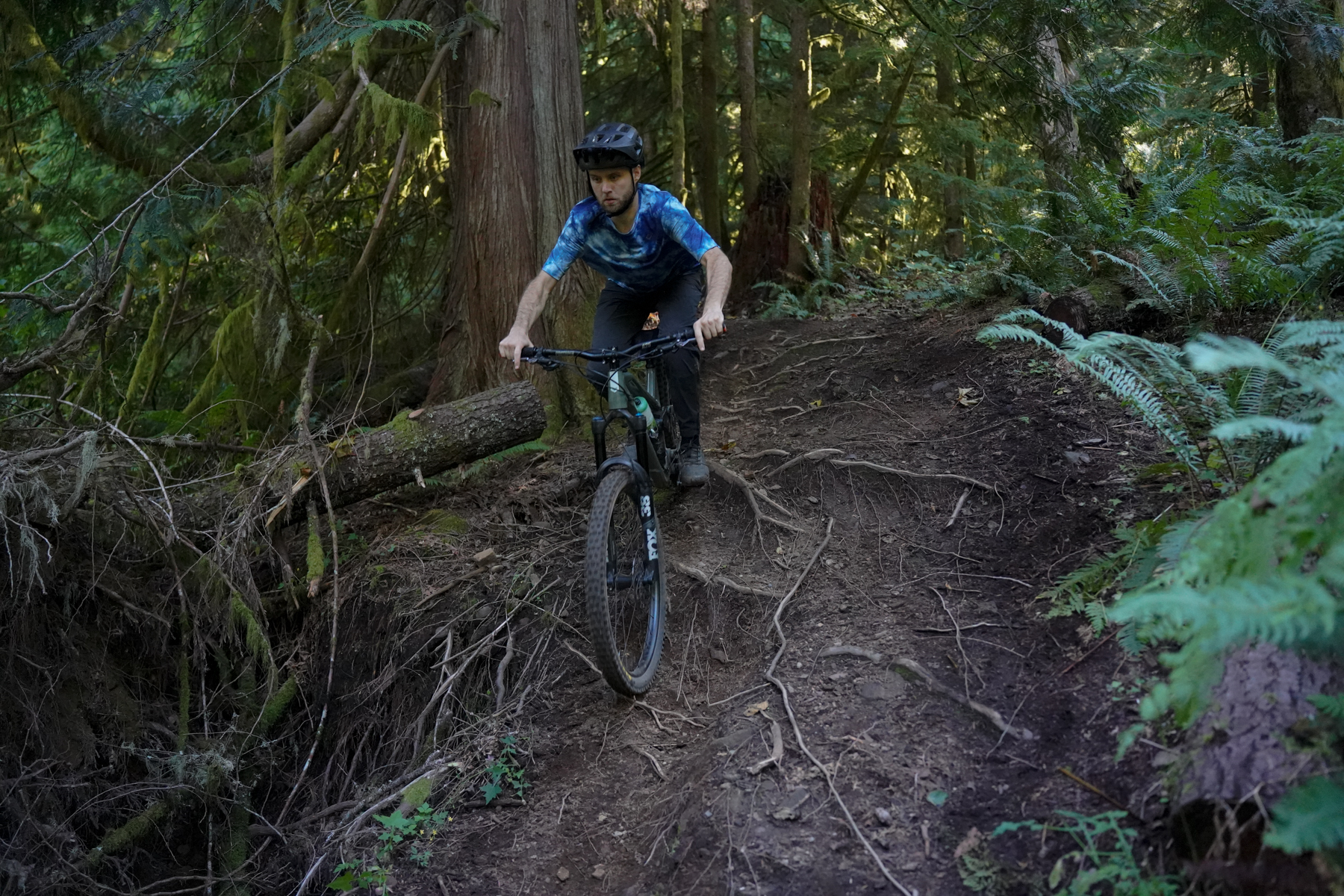
The 161 favors a relatively centered stance with the bars at least moderately high, and there are many better options if you want a bike that specifically favors a more forward position. We’ll dive into the geometry and wheel size options in greater detail in a minute, but that’s (unsurprisingly) especially true with a 29’’ rear wheel and the chainstays in the long setting; converting to a mixed wheel setup and/or shortening the chainstays moves the 161’s preferred balance forward a bit, but it never gets that far forward.
One of the big questions I had going into the test was just how well the ultra-progressive rear suspension would feel, and how well-balanced the bike’s suspension performance would feel front to rear. The short version is “quite good,” and I think the work Privateer did with Fox to tune the stock Float X2 to the 161 deserves a lot of credit. [Check out Ep.192 of Bikes & Big Ideas with Dan Hicks, the engineer behind Privateer’s V2 bikes for a lot more on that.]
Particularly when paired with a notably progressive leverage curve, shocks with a big bottom-out bumper — like the regular Fox X2 — can feel pretty wooden deep in their stroke, and ramp up too quickly once the bumper is engaged. By eliminating the bumper (there’s still an o-ring in there to prevent full metal-on-metal contact) and making the 161 progressive enough that it doesn’t need anything more than that, Privateer has given the bike especially well-controlled and consistent bottom-out behavior. I never experienced any harsh (or even noticeable) bottom-out events, despite still using full travel with some regularity. The whole package works great.
Another tricky aspect of setting up a shock for an especially progressive bike is getting the rebound behavior dialed. In short, the challenge arises in sorting out a rebound tune that feels consistent across the whole shock stroke and a range of different bump sizes. The effects of the leverage curve on the spring behavior are more widely understood, but it also works in reverse — the spring is what provides the rebound force for the shock, after all, and the same changes in the leverage curve that impact the spring behavior also change the relationship between the shock damper and the wheel on rebound. On super progressive bikes, it’s common to wind up either feeling like the rebound is too slow and sluggish when returning from a really deep compression, or too lively and uncontrolled on smaller ones. Fortunately, Privateer and Fox have done an excellent job there, too — the stock Float X2 is easy to set up to avoid such issues, and the base tune is notably dialed.
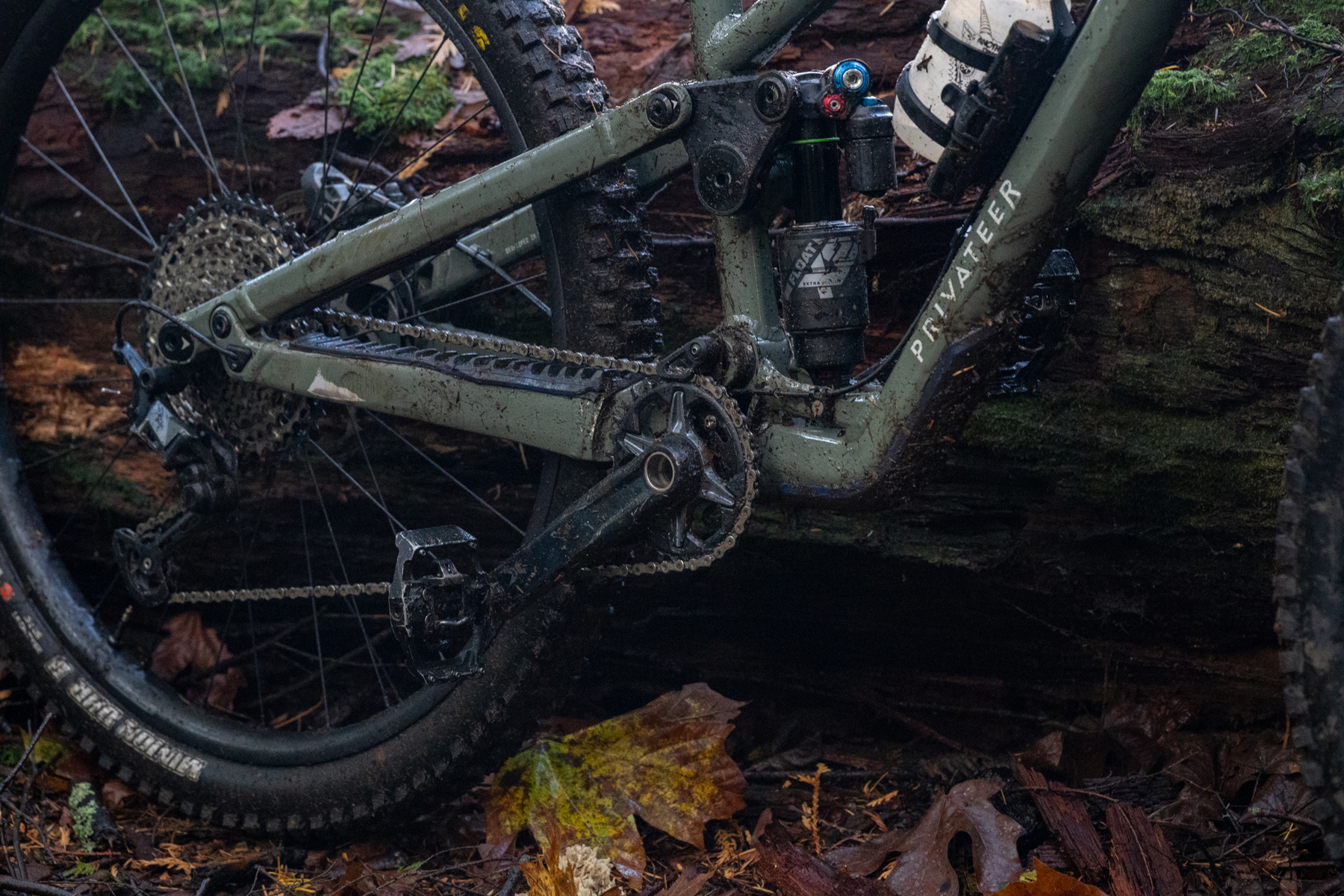
Of course, the potential downside of Privateer’s approach is that the 161 isn’t likely to be a great candidate for an off-the-shelf aftermarket shock without some custom tuning work. That said, the stock Float X2 feels so well matched to the bike that I haven’t been very interested in trying anything else. Unfortunately, the X2 did ingest a bunch of air into its damper part way through my time on the bike, but that would have been a warranty issue had it popped up on a customer bike. A simple service had me back up and running in short order.
The especially high progression of the 161’s suspension also contributes a lot to the 161’s small bump sensitivity and rear wheel traction, which are outstanding. The 161 is incredibly supple off the top without feeling wallowy or lacking in support deeper in the travel. Its suspension feels incredibly active early in the travel while getting firmer and more supportive deeper in the stroke, and does so in a commendably consistent manner. Just slapping on a super progressive leverage curve and calling it a day tends not to work that well, but Privateer has invested time in the requisite shock tuning to make it effective, and the results are excellent.
The tradeoff here is that the 161 does not feel particularly lively. In fact, it’s probably the most planted-feeling non-high-pivot bike in its travel bracket that I’ve been on to date. There are a lot of current Enduro bikes that better facilitate a super precise, active riding style (check out our Deep Dive on the 161 for a whole lot more on that), but the 161 makes up for that by being very stable, composed, and willing to just steamroll whatever’s in front of it.
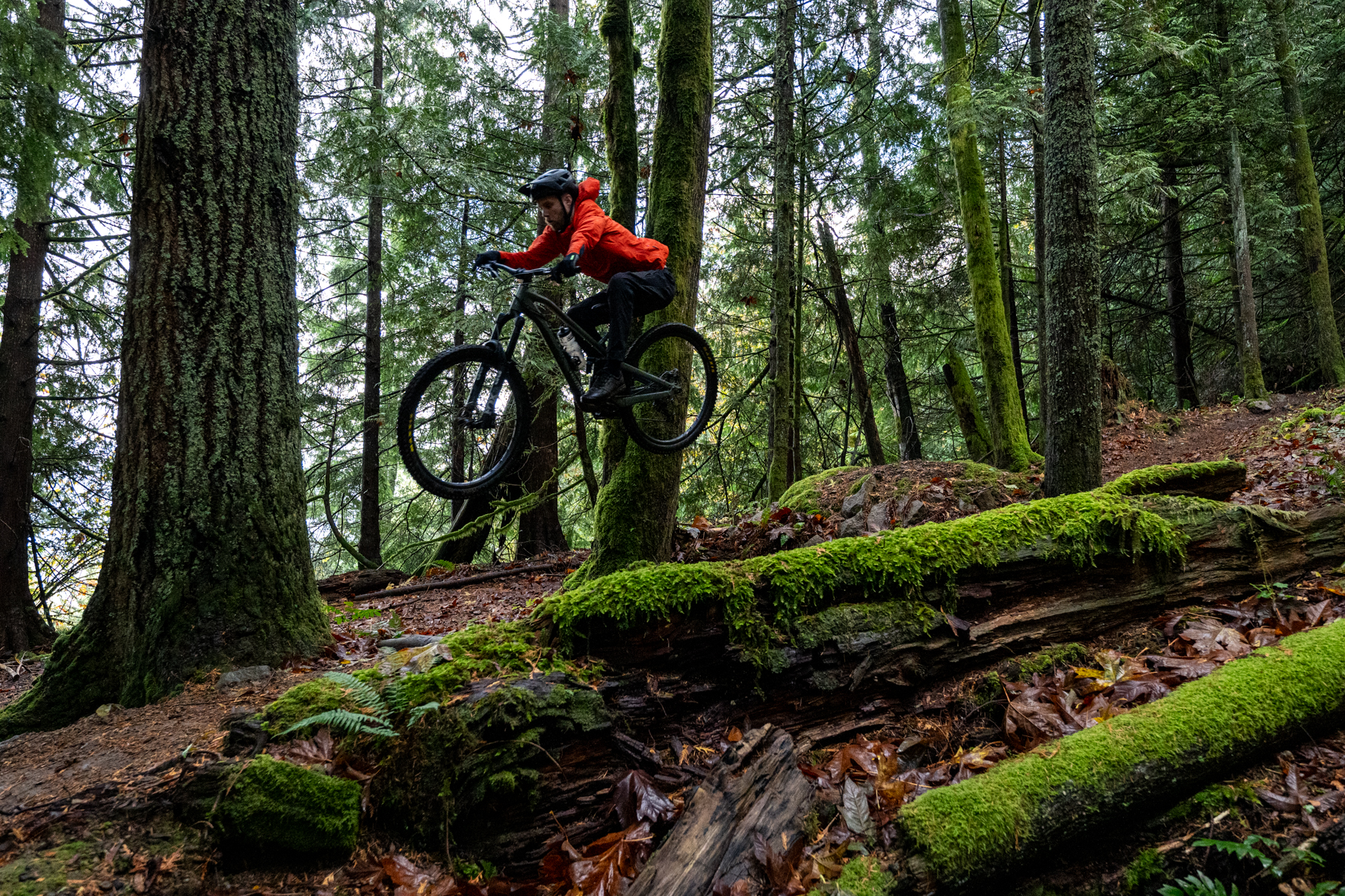
The 161 also feels burly. It’s one of the stiffer aluminum frames I’ve been on in recent memory, but its ride quality still feels great — a welcome contrast to some of the ultra-stiff carbon fiber options out there, which I often find to be pretty harsh and to transmit more small feedback than I’d like. The ultra-sensitive suspension does a great job of muting out whatever minor harshness the super stiff frame might have presented otherwise (though, again, it seems to me that it’s easier to make a really stiff aluminum bike that doesn’t feel ping-y and harsh than it is with carbon). Overall, I’ve got a lot of confidence that the 161 will hold up well in the long run. It’s clearly very stout; it uses huge bearings with good secondary sealing throughout the linkage; and the frame alignment is excellent, as evidenced by how neatly the various flip chips go together without fuss.
Speaking of which: I’ve run the 161 in all four possible combinations of wheel size and geometry settings (i.e., as a full 29er or a mullet, in both the short and long chainstay settings for both). All four feel reasonably coherent, though I preferred the longer chainstay setting overall regardless of wheel size, and especially in the mixed wheel configuration. In a given wheel size, the longer chainstay setting makes the 161 a little more stable and (more significantly, in my view) shifts its preferred weight bias rearward a bit as compared to the shorter setting with the same wheel size. I like the more centered position that the longer chainstays facilitate for this sort of bike, mostly because I find bikes that work well with the bars relatively high and your weight centered on the bike to be a lot less demanding of perfect body positioning when taking big impacts on steep descents in particular.
That approach tends to make bikes a bit more sluggish and less engaging on flatter, lower-speed trails as compared to bikes that want more weight over the front end, but if mellow, rolling trail performance is a high priority, you’re barking up the wrong tree with the 161. It’s a bike for going hard in steep, burly terrain, and the sort of body positioning it favors is nicely in line with that goal.
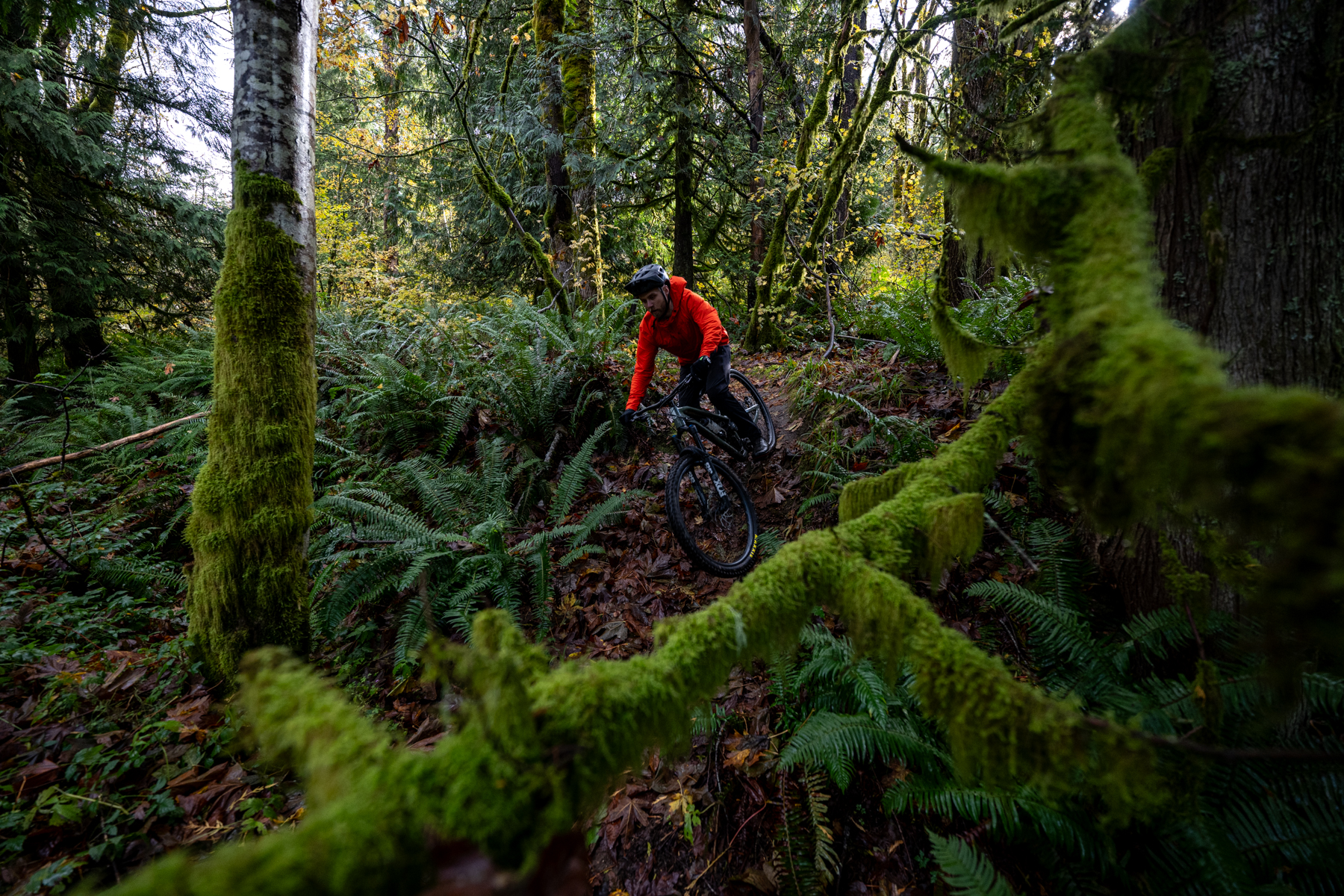
As per usual, going to a 27.5’’ rear wheel makes the 161 a little quicker to change direction, and requires more frequent steering corrections through the bars to make up for the bigger front wheel’s slower turn-in than the rear’s. Longer chainstays tend to counteract that tendency, and that’s the main reason that I clearly prefer the longer option with a 27.5’’ rear wheel.
Overall, though, the ride feel differences between the full 29’’ setting and the mixed wheel one are relatively subtle — it’s a much less stark difference than it is on a lot of other convertible bikes, I think largely because the chainstay length doesn’t change a whole lot between the two. A lot of convertible bikes get substantially shorter chainstays in the mixed-wheel configuration (which runs counter to my typical preference of liking long chainstays on mixed-wheel bikes to balance out the handling feel) but on the 161, the mixed-wheel setting is only about 3 mm shorter than the 29er one (with the chainstay length flip chip in the same setting for both).
I feel a lot less strongly about the chainstay length options in full 29er mode, but the longer setting makes for a little more room to move around on the bike at the expense of a touch of agility, and for the sorts of trails the 161 is really meant for, I’m generally inclined to take that tradeoff.
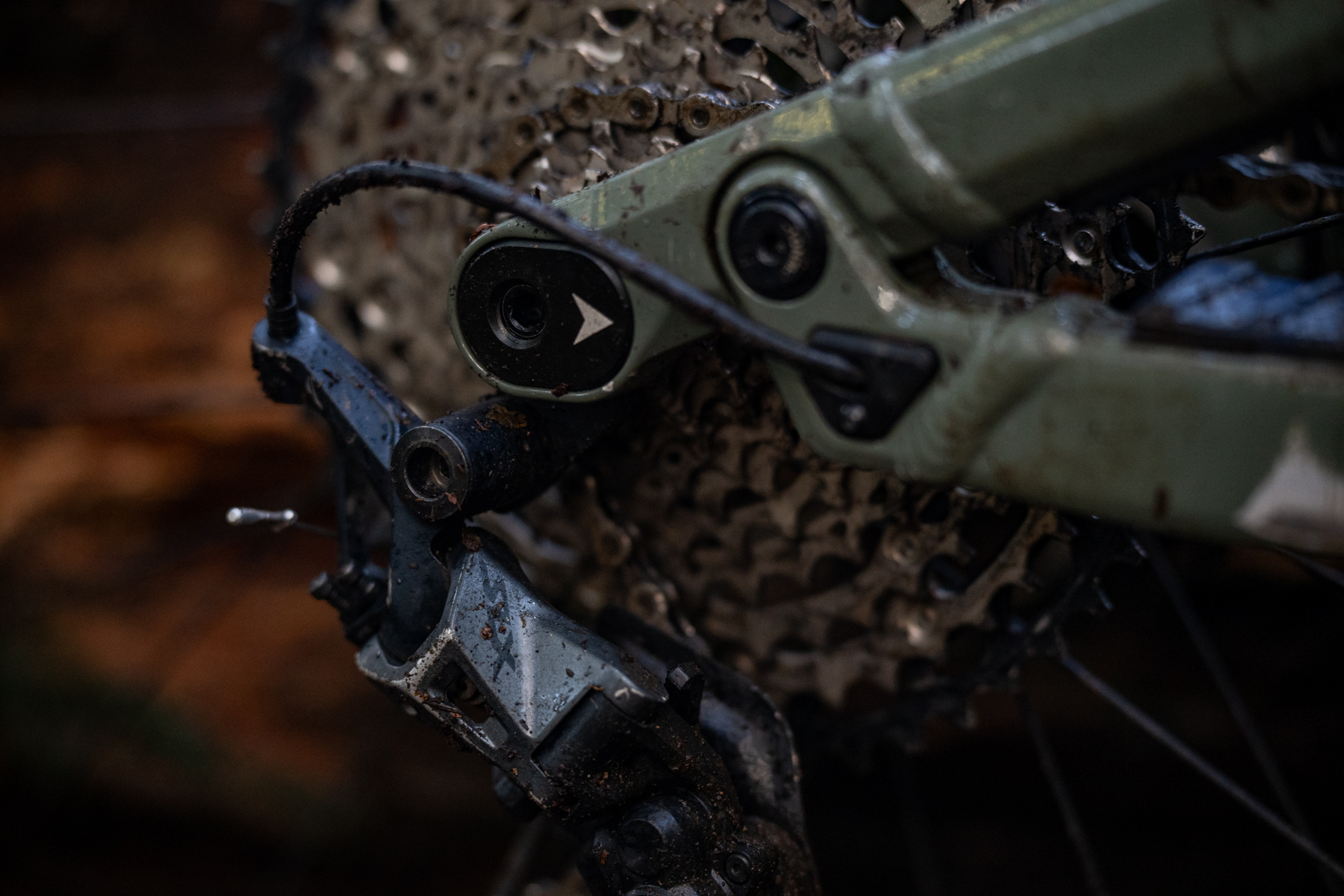
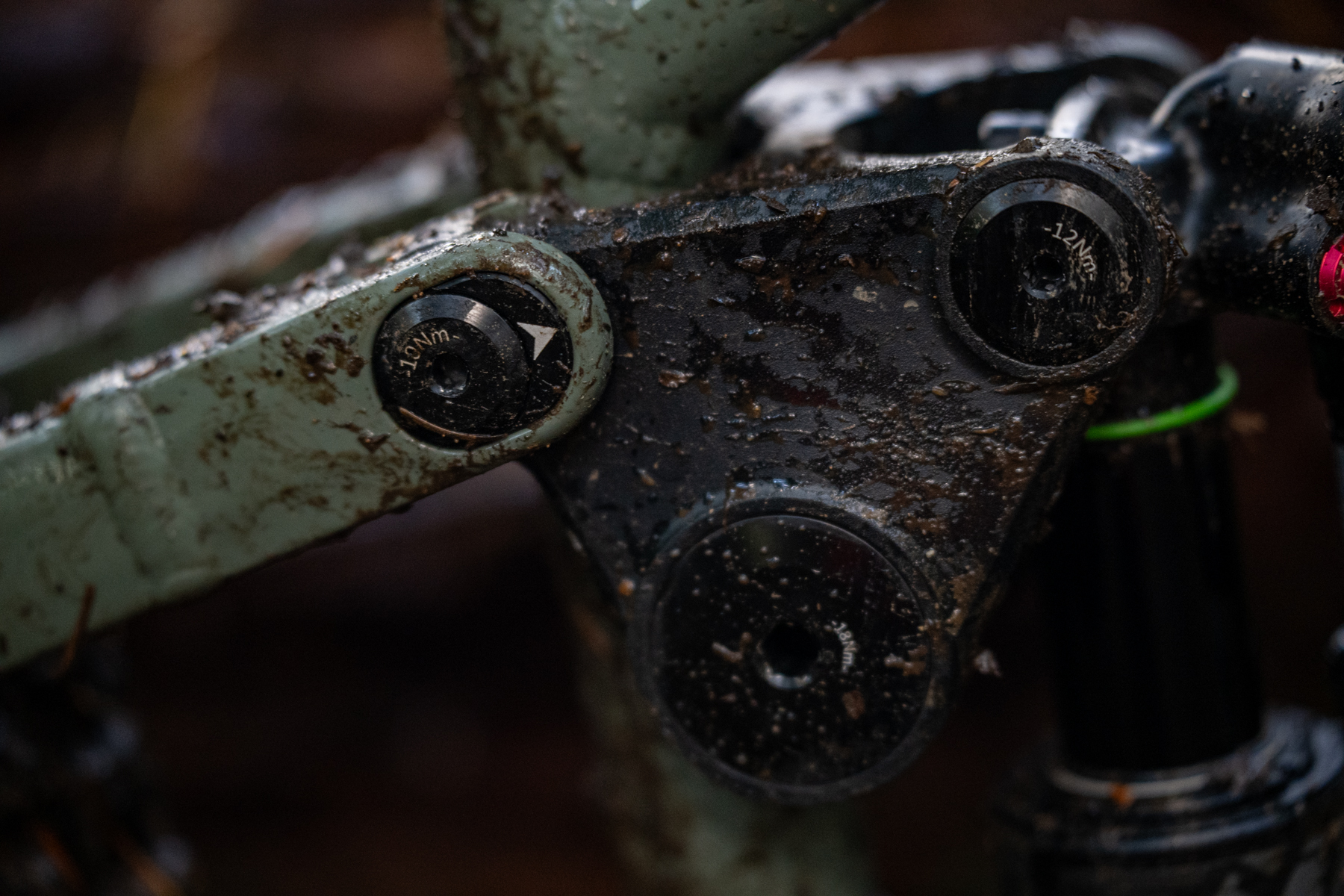
I’m also a big fan of the fact that the 161’s chainstay adjustment can be done trailside with a multi-tool, without the need to exchange any parts. You just remove the rear wheel, turn the dropout flip chips around, reverse the bolt-on brake mount to move the caliper back into alignment, and put the wheel back on. I don’t imagine that most folks will be making trailside swaps that often, but it’s nice for the initial setup and experimentation period, and it’s great that you don’t have to buy extra parts to make the swap. The minor downside of this arrangement is that the derailleur hanger is only secured by the rear axle, and it’s slightly fiddly to line everything back up when you’re re-installing the rear wheel for whatever reason, but I didn’t find it to be a big deal. It’s worth pointing out that the 161 doesn’t use a UDH, so SRAM Transmission compatibility is out, but expensive electronic shifting is probably not a top priority for the folks who are drawn to the 161 in the first place.
The Build
The 161 is an outstanding value when it comes to its build spec, and Privateer has done a great job of picking parts that perform great in the areas that matter the most and are solid without being needlessly expensive everywhere else.
The Fox 38 / Float X2 Performance Elite suspension package is a great bang-for-buck option that’s virtually indistinguishable from the top-tier Factory options from a performance standpoint. Our review bike turned up with the now-prior-generation Grip 2 damper rather than the new Grip X2 unit/ I definitely prefer the updated damper for its added compression damping and support (check out our Full Review for a lot more on that), but the relatively centered, upright body position that the 161 facilitates goes a long way toward minimizing the downsides of the older Grip 2 one. I think that’s mostly down to the more upright stance the 161 favors simply not asking as much of the fork from a support standpoint to keep the front end from diving.
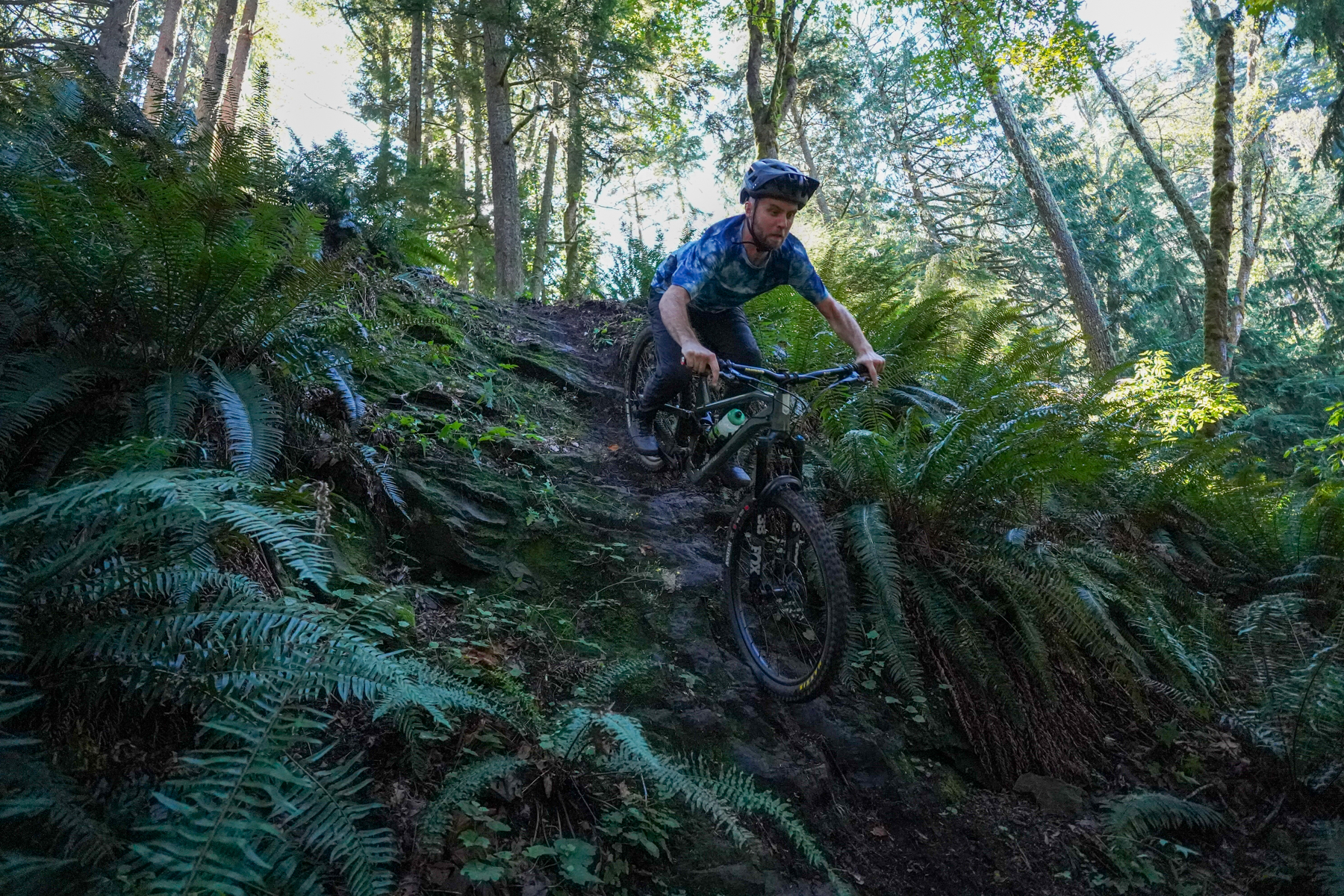
The rest of the build is very sensible, too. The Hayes Dominion A4 brakes are still one of my favorite gravity-oriented options on the market, and I love that Privateer hasn’t messed around with the rotor sizing, with a 223 mm one up front and a 203 mm in back. The tire spec is similarly (and uncommonly) burly, with a Maxxis Assegai MaxxGrip DoubleDown up front, and a DHR II in MaxxGrip rubber and the DH casing in the rear. I’ve routinely complained about big Enduro bikes coming with inadequately burly tires for the bike’s intended use — Exo+ casings have no place on this sort of bike — so it’s great to see Privateer throwing weight concerns to the wind and putting on tires that can keep up with the rest of the bike.
The Shimano SLX drivetrain (with an XT shifter, which is a real upgrade from a precision / tactile perspective) isn’t flashy or light but works plenty well. The rear Hunt Enduro wheel lost a lot of spoke tension after a couple of rides, but a quick re-tensioning had it back up and running, and I didn’t have any further issues after that.
My only real complaint about the build spec is that I’d like to see a longer dropper post than the 180 mm OneUp that came stock. The 161 has great seatpost insertion and a reasonably short seat tube, so I had more than enough room to swap in a 210 mm version (which I did) and I’m pretty sure a 240 mm one would have been fine, too. I also found the stock Race Face Turbine handlebar to be awfully stiff for my taste and used the opportunity to work on testing a couple of other options, but that was an easy swap and one that I make on a ton of review bikes for one reason or another anyway.
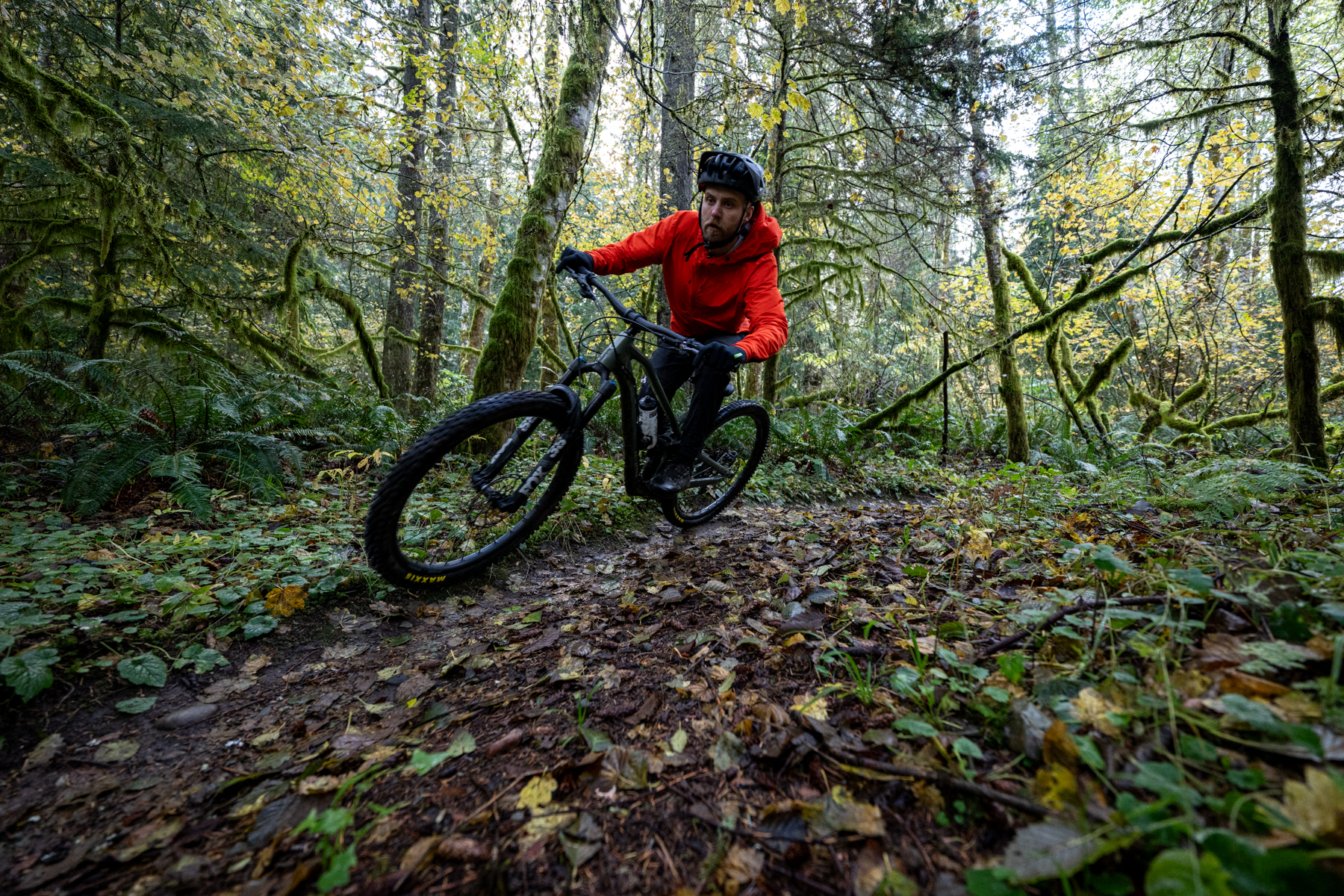
Especially considering that the complete bike comes in under $5,000, I love what Privateer has done with the build. Their goal was to make a super high-performing, reliable Enduro race bike at an uncommonly good price, and they’ve done just that — and haven’t fallen into the common trap of chasing a low weight on paper by using parts (tires in particular) that are likely to be swapped by anybody who’s using the bike to its full potential. The result is pretty porky at 39.84 lb / 18.07 kg, but I think that’s a fair tradeoff considering how well the 161 performs and how (relatively) little it costs. You could make it lighter by throwing some more money at it (the drivetrain and wheels more than anything else) or you could dumb it down with less beefy parts (tires, smaller brake rotors, etc.) but it’s a truly impressive package if you want something you can just go rage on right out of the box, particularly considering the modest asking price.
Who’s It For?
This is easy: the 161 is an unbeatable value-for-money proposition if you want a stable, planted, game-on Enduro bike. It’s not light, it’s not very lively, and it isn’t engaging on mellower, flatter trails, but if you gave me a $5,000 budget to buy a legit Enduro race bike, I’d take the 161 without a moment’s hesitation.
Bottom Line
Privateer’s whole founding ethos was to build hugely capable Enduro race bikes at especially good prices, and they’ve done an exceptionally good job of that with the new 161. The details of how they’ve gone about that goal are pretty different than the first-generation 161 (which was also great in its own way), so I wouldn’t call the new 161 a shoo-in replacement for folks who love the original. The new 161 is excellent at what it does, and comes with an exceptionally well thought out build for a very reasonable price. Taking the value proposition into account, I think the 161 is probably the most impressive bike I’ve been on this year.
Deep Dive Comparisons
BLISTER+ members and those who purchase our Digital Access Pass can check out our Deep Dive comparisons linked below. Get our Digital Access Pass to view all our Deep Dives and Flash Reviews, or become a BLISTER+ member today to get access to that and a LOT more, including the best worldwide Outdoor Injury Insurance, exclusive deals and discounts on skis, personalized gear recommendations from us, and much more.
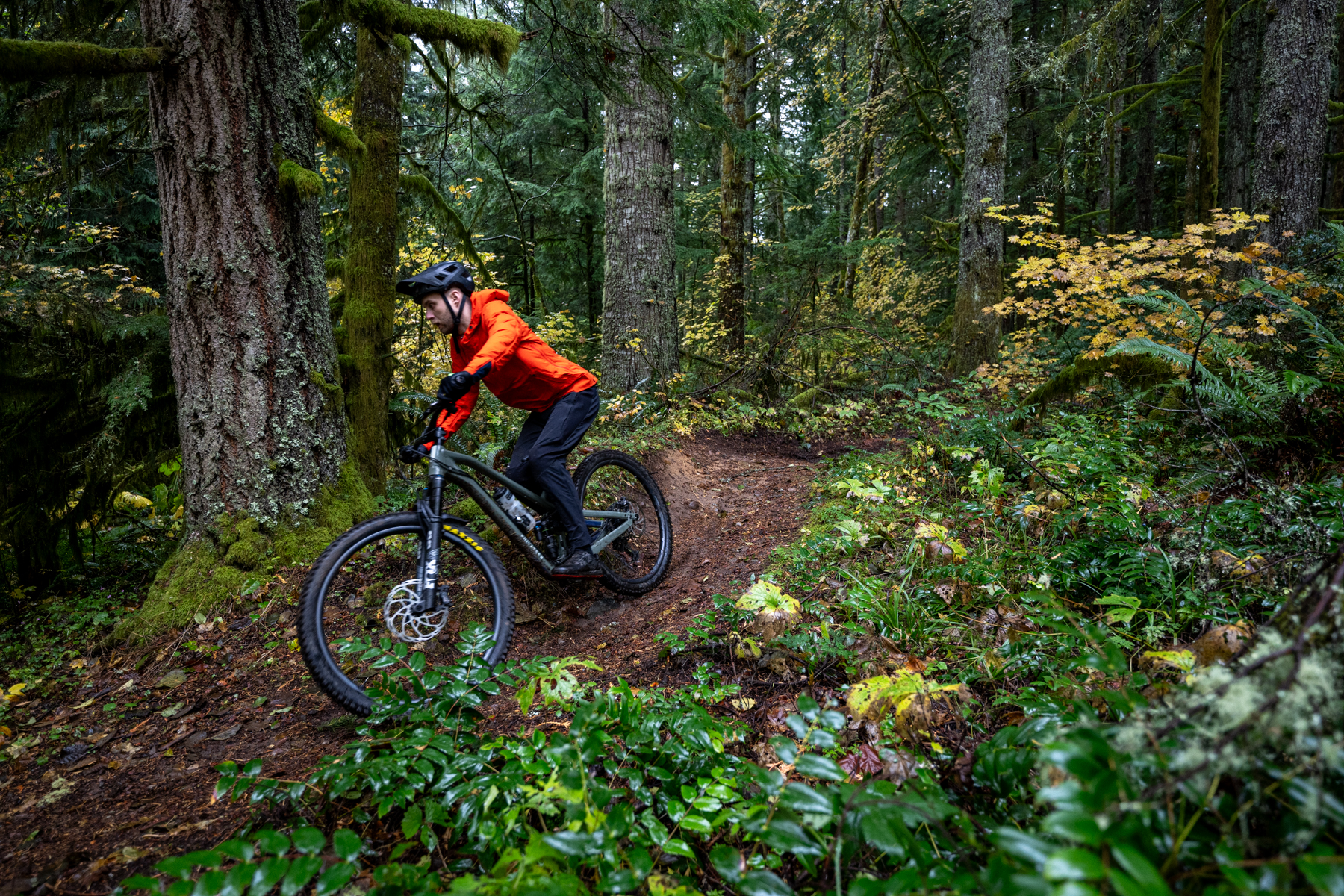
Deep Dive: Privateer 161 Gen 2
We compare the Privateer 161 Gen 2 to the original 161, RAAW Madonna, Chromag Lowdown, Contra MC, Trek Slash, Nicolai G1, Rocky Mountain Altitude, Orbea Rallon, Yeti SB160, Pivot Firebird, Yeti SB165, and Ibis HD6.
Blister’s Flash Reviews and Deep Dives are accessible to those who purchase one of our paid subscriptions
To get our comprehensive Deep Dives and our initial, unfiltered reports on new gear, become a member and receive many other services, deals, and discounts.
If you’re already an active member, please log in.
(If you’re already logged in and a member in good standing and seeing this message in error, please refresh this page in your browser.)

Nice review. I’ve got a gen 1 161, and I love it. Have made a couple of changes (coil shock and high rise bars) and now the bike is dialed.
Man, they really killed the looks of a once beautiful bike.